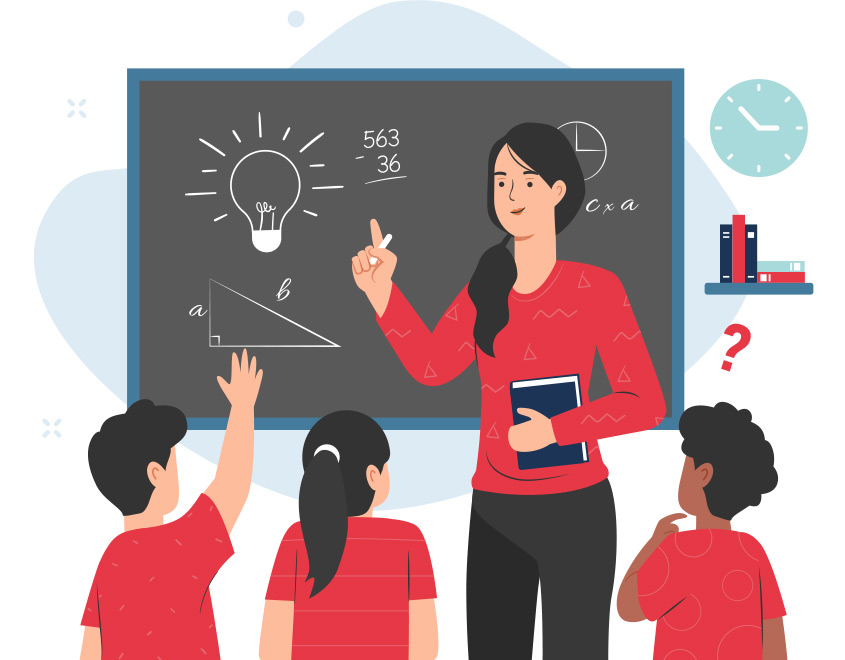Tailored Primary Science Tuition Singapore for Your Child’s Success
Tailored Primary Science Tuition Singapore for Your Child’s Success
Blog Article
A Comprehensive Overview to the Numerous Understanding Methods in Primary Science Direction
The exploration of varied discovering methods in key scientific research guideline provides a chance for educators to improve trainee involvement and comprehension considerably. By checking out hands-on learning strategies, inquiry-based methods, and collaborative approaches, we can determine efficient methods that cater to numerous discovering styles.

Hands-On Discovering Techniques
Hands-on learning strategies play a pivotal duty in primary science direction, engaging pupils in energetic expedition and experimentation. These approaches enable students to connect directly with products and phenomena, fostering a much deeper understanding of scientific concepts. By using manipulatives, models, and real-life experiments, teachers develop a setting where students can observe, hypothesize, and examine their ideas.
Such strategies not only enhance comprehension but additionally grow critical thinking and analytic skills. When pupils take part in tasks like building simple devices, planting seeds, or conducting chemical responses, they are urged to ask concerns and look for answers through their very own observations. This experiential strategy helps to demystify intricate clinical principles, making them much more relatable and available.
Furthermore, hands-on learning promotes collaboration amongst peers, as pupils typically function in groups to perform experiments or share findings. This synergy not just enhances their understanding experience however also develops essential social abilities. Ultimately, incorporating hands-on methods in key science instruction promotes a long-lasting love of knowing and interest regarding the natural globe, laying a solid foundation for future scholastic searches in scientific research and past.
Inquiry-Based Knowing
Inquiry-based knowing is an instructional technique that encourages students to ask concerns, examine phenomena, and build their very own understanding of clinical ideas. This approach moves the focus from conventional teacher-led guideline to a more student-centered experience, where students take the effort in their academic trip. By fostering curiosity, inquiry-based discovering promotes much deeper engagement with the material, allowing pupils to discover topics in a meaningful context.
In technique, this technique often entails hands-on experiments, monitorings, and important reasoning tasks that line up closely with the clinical approach. Students are motivated to create theories, design investigations, and evaluate data, which cultivates necessary skills such as analytical and problem-solving thinking. The function of the instructor in this framework is to help with exploration, leading students with the questions procedure while encouraging independent idea and collaboration.
In addition, inquiry-based knowing nurtures a sense of possession over the discovering process, motivating students to pursue knowledge proactively. This approach not just enhances understanding of scientific concepts but likewise promotes a long-lasting love for knowing, outfitting pupils with the skills essential to browse an increasingly intricate globe.
Collaborative Discovering Approaches
Collaborative learning techniques encourage pupils to participate in meaningful communications with peers, cultivating a shared responsibility for their educational results. In main science instruction, these strategies encourage students to function with each other to discover scientific concepts, solve problems, and carry out experiments (primary science tuition Singapore). By getting involved in group tasks, students can utilize diverse point of views, enabling richer understanding and retention of scientific understanding
One key facet of joint knowing is the focus on interaction skills. Students have to express their ideas, listen proactively to others, and work out ideas, all of which are vital competencies in both scholastic and real-world contexts. This social communication not only improves their understanding of clinical principles however likewise promotes team effort and problem resolution skills.
In addition, collaborative learning often brings about raised motivation and involvement. They are a lot more likely to take ownership of their knowing journey when trainees see the worth of their contributions within a group. Educators can promote this process deliberately organized group jobs that line up with curriculum goals while offering advice on efficient partnership strategies. Overall, including joint learning methods in primary scientific research guideline cultivates a vibrant understanding setting that prepares pupils for future academic and social difficulties.
Innovation Integration in Scientific Research
The integration of technology in primary scientific research guideline improves discovering experiences by giving cutting-edge devices and resources that support various teaching methodologies, including collaborative discovering - primary science tuition Singapore. Using electronic platforms, simulations, and interactive applications allows trainees to engage deeply with clinical concepts, assisting in a much more hands-on strategy to learning
Digital laboratories, for example, allow students to carry out experiments safely and successfully, promoting inquiry-based learning. These tools can simulate real-world scientific scenarios, allowing students to picture intricate processes that would certainly be difficult to duplicate in a traditional class setup. Additionally, innovation cultivates communication and partnership among students, as they can share findings and function together on jobs with online platforms.
Furthermore, multimedia presentations and academic video clips can enrich lessons by dealing with varied learning styles, making abstract concepts a site web lot more available. Data analysis devices additionally encourage pupils to accumulate and analyze clinical information, enhancing important assuming abilities. Overall, the tactical unification of innovation in main science instruction not only improves involvement but additionally prepares students for a technologically innovative society, equipping them with essential abilities for future scientific endeavors.
Separated Direction Approaches
Distinguished direction approaches are essential for dealing with the varied requirements of learners in key scientific research education. These approaches allow teachers to customize their mentor methods to suit differing abilities, interests, and learning styles within the classroom. By utilizing separated instruction, educators can produce a comprehensive atmosphere that fosters interaction and improves understanding of clinical principles.
One effective method is to make use of flexible organizing, which allows pupils to team up with peers at similar ability degrees or with varying perspectives. This technique motivates peer knowing and advertises important thinking. Furthermore, supplying choices in assignments can equip students, enabling them to choose projects that resonate with their passions while still satisfying curricular purposes.
Furthermore, including tiered projects is one more beneficial strategy. Deliberately tasks with varying degrees of intricacy, educators can make sure that all students are suitably tested, no matter their proficiency. Using formative assessments to assess understanding more allows instructors to adjust their instructional techniques dynamically, ensuring that each learner obtains the assistance they require.
Eventually, applying distinguished direction approaches in primary science education not only boosts trainee learning end results however likewise cultivates an enthusiasm for scientific research, preparing trainees for future scholastic quests.

Verdict
In recap, efficient main science direction requires a multifaceted technique that incorporates hands-on learning, inquiry-based approaches, and joint techniques. The integration of technology and separated direction even more caters to varied knowing styles, cultivating an environment favorable to exploration click to investigate and vital thinking.
The exploration of varied learning approaches in main science instruction presents a chance for educators to enhance pupil interaction and understanding considerably.Hands-on understanding methods play a pivotal function in primary scientific research guideline, involving trainees in active exploration and testing.Inquiry-based knowing is an educational method that motivates pupils to ask inquiries, examine sensations, and create their own understanding of clinical concepts.Joint knowing strategies empower students to engage in meaningful interactions with peers, cultivating a shared responsibility for their instructional end explanation results. On the whole, including joint understanding methods in key science instruction cultivates a vibrant knowing setting that prepares pupils for future scholastic and social obstacles.
Report this page